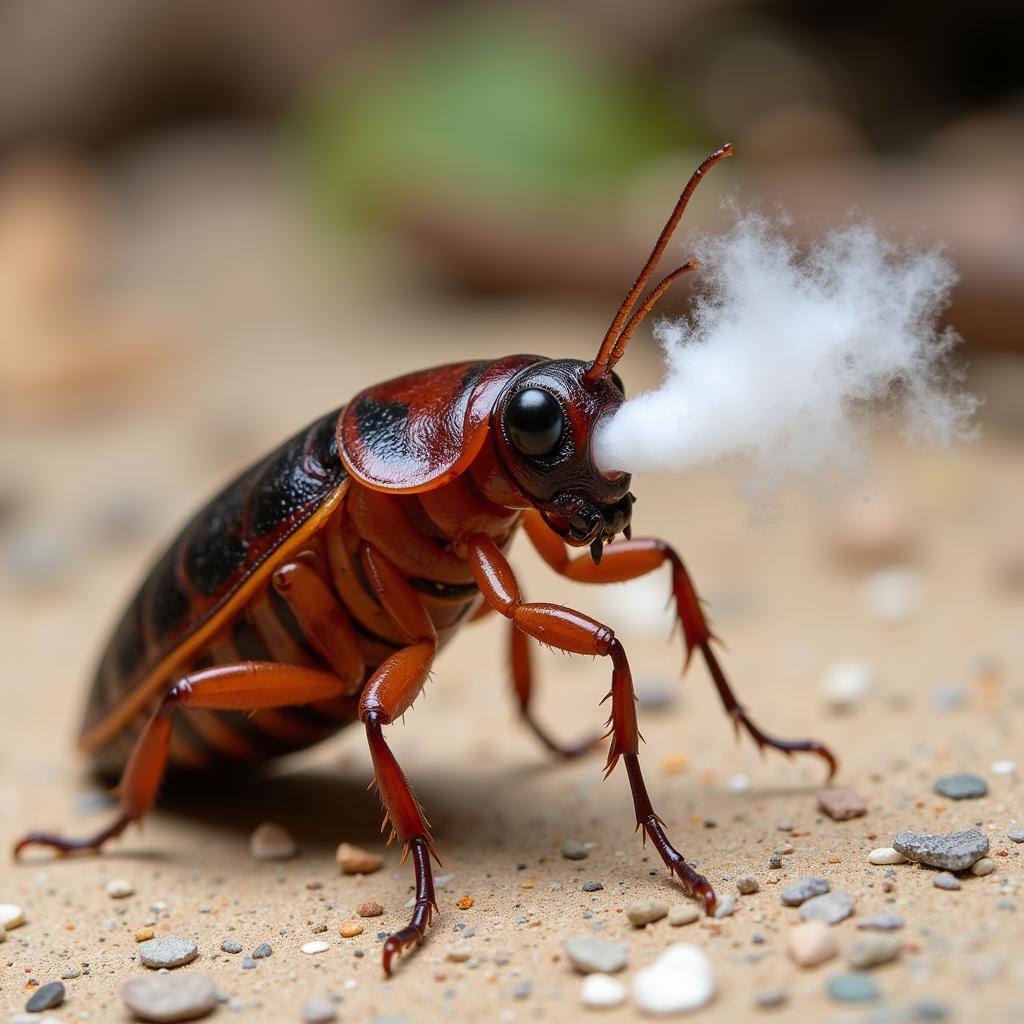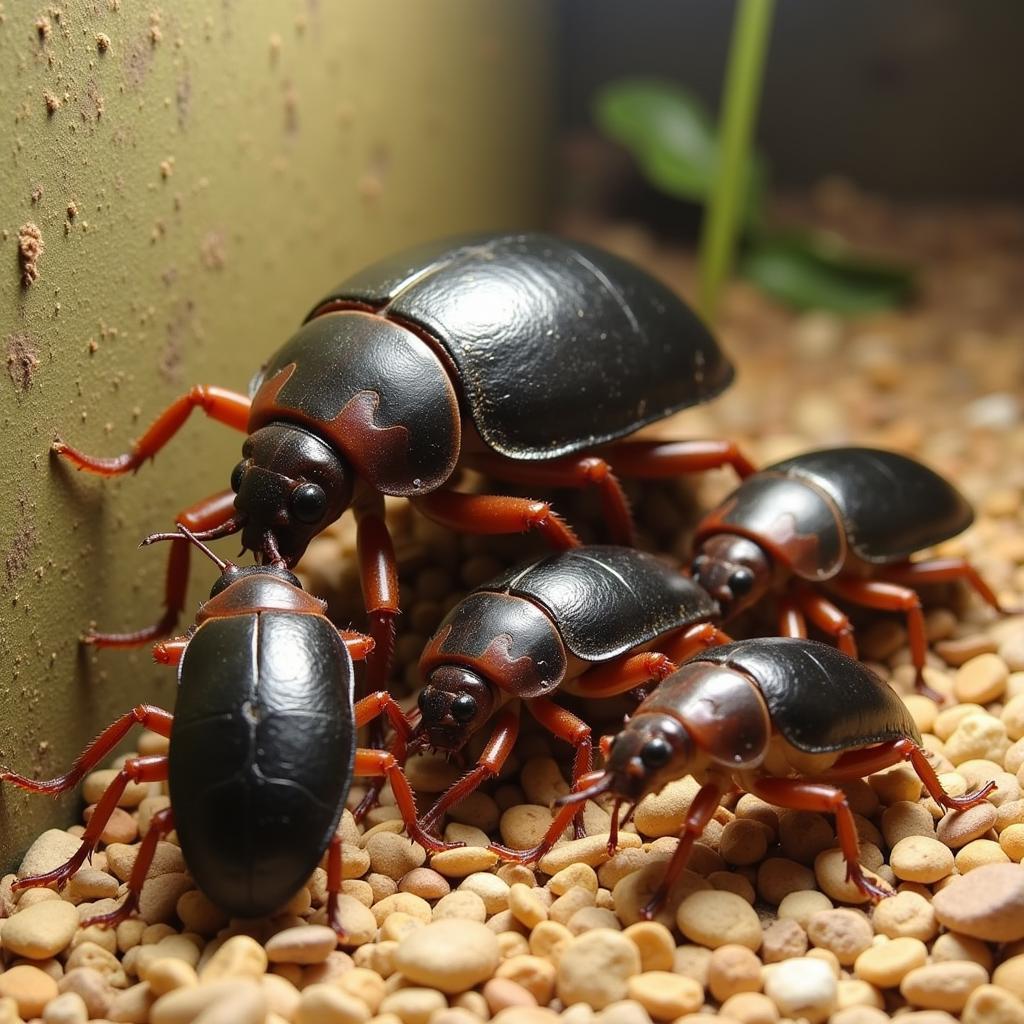The Amazing World of the African Hissing Cockroach
The African Hissing Cockroach (Gromphadorhina portentosa) is more than just a creepy crawly. These fascinating insects are native to Madagascar and have captured the attention of scientists, hobbyists, and even pet owners worldwide. Their unique hissing sound, impressive size, and relatively simple care requirements make them a popular choice for insect enthusiasts. Let’s delve into the captivating world of these remarkable creatures and uncover the secrets behind their hisses, habits, and surprisingly gentle nature.
Getting to Know the African Hissing Cockroach
Unlike your average household pest, the African hissing cockroach is a gentle giant. They can grow up to 3 inches long, boasting a shiny, dark brown exoskeleton. Their flattened bodies allow them to squeeze into tight spaces, a helpful adaptation for navigating their natural habitat of decaying logs and leaf litter on the forest floor of Madagascar. But what truly sets them apart is their distinctive hiss.
These cockroaches are not pests in their native habitat; instead, they play a crucial role in the ecosystem by breaking down organic matter. This contributes to the health of the forest floor. Their presence is a sign of a thriving ecosystem, not a cause for concern like common household cockroaches.
 Close-up of an African Hissing Cockroach
Close-up of an African Hissing Cockroach
The Secret Language of Hisses: How and Why They Communicate
So, how do these wingless wonders create their signature hiss? The answer lies in their specialized respiratory system. Unlike most insects that breathe through spiracles along their bodies, African hissing cockroaches force air out through these spiracles, creating the hissing sound. They utilize this hissing for various forms of communication, including attracting mates, establishing dominance, and warding off predators. Imagine a forest floor echoing with these intriguing sounds – a testament to the vibrant life within.
There are four distinct types of hisses: the disturbance hiss, the fighting hiss, the mating hiss, and the copulatory hiss. Each hiss has a different purpose and intensity, adding another layer of complexity to their communication.
 African Hissing Cockroach Hissing
African Hissing Cockroach Hissing
Caring for African Hissing Cockroaches: A Rewarding Experience
African hissing cockroaches are surprisingly low-maintenance pets. They thrive in a simple setup with a substrate of coconut fiber or peat moss, a few hiding places like cork bark or egg cartons, and a shallow dish of water. They are primarily herbivores, enjoying a diet of fruits and vegetables, making them relatively easy and inexpensive to feed.
One crucial aspect of their care is maintaining proper humidity. A humid environment is essential for their molting process. Without adequate humidity, they can struggle to shed their old exoskeleton, leading to potential health issues.
Dr. Anya Petrova, an entomologist specializing in insect behavior, explains, “These cockroaches are fascinating to observe, particularly their social interactions and communication methods. Their hissing is more than just a sound; it’s a complex language that reveals much about their social structure.”
African Hissing Cockroaches: Beyond Pets
Beyond the realm of pet ownership, African hissing cockroaches play a valuable role in scientific research. Their simple nervous system makes them ideal subjects for studying neuronal activity and insect behavior. They are also used in educational settings to teach students about insect anatomy, life cycles, and ecological roles.
 Group of African Hissing Cockroaches
Group of African Hissing Cockroaches
Conclusion
The African hissing cockroach is a captivating creature that deserves a second look. From their unique hissing communication to their gentle nature and important ecological role, these insects offer a glimpse into the wonders of the natural world. Whether you’re a seasoned insect enthusiast or simply curious about these fascinating creatures, learning about the African hissing cockroach is a rewarding experience.
FAQ
- What do African hissing cockroaches eat? They are primarily herbivores, eating fruits and vegetables.
- How long do African hissing cockroaches live? They can live for up to 5 years in captivity.
- Are African hissing cockroaches dangerous? No, they are not dangerous and are generally docile.
- Can African hissing cockroaches fly? No, they are wingless.
- How do African hissing cockroaches reproduce? They reproduce sexually, and the female carries the eggs in an ootheca until they hatch.
- What is the ideal temperature for African hissing cockroaches? Around 75-85 degrees Fahrenheit.
- How often do African hissing cockroaches molt? They molt several times throughout their life cycle, usually every few months as nymphs.
More Questions & Further Reading
Have more questions about African hissing cockroaches or other fascinating insects? Check out our other articles on insect care, behavior, and conservation. Learn about the vital role insects play in our ecosystems and discover the incredible diversity of the insect world.
Need Help? Contact Us!
For assistance with any questions related to African hissing cockroaches or other inquiries, please don’t hesitate to contact us:
Phone: +255768904061
Email: kaka.mag@gmail.com
Address: Mbarali DC Mawindi, Kangaga, Tanzania
Our dedicated customer support team is available 24/7 to address your needs.

